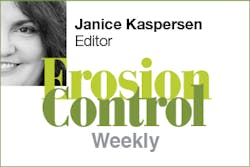
It’s taken wetlands a long time to get the respect they deserve. In the 1800s, many wetlands and marshes throughout the US were drained, filled in, and “reclaimed” for purposes considered more useful at the time, such as agriculture and urban development. Florida’s Everglades are a good example; today we’re spending millions to undo some of the work that was done back then, removing drainage canals, reestablishing natural flows of water, and restoring ecosystems.
Now we recognize that wetlands not only provide water-quality benefits, but also aid in flood control—something that’s becoming more important in areas concerned about sea level rise and higher-than-usual rainfall levels. Though we’ve often used the word derisively in the past (it’s actually the term for a forested wetland), the swamp is looking like a pretty good deal these days.
EPA thinks so, too. Last week the agency released the first National Wetland Condition Assessment, rating the health of swamps throughout the US. Overall, almost half our wetlands receive a “good” health rating, 20% “fair,” and 32% “poor.” The distribution is uneven, though; of those in the western US, west of the Rockies, only 21% are in good condition, 18% fair, and 61% poor.
Part of the problem in the West is the ongoing drought, as well as hydrologic changes and invasive plants. In general, the survey found that estuarine wetlands are faring better than inland wetlands.
The assessment, which was conducted with the cooperation of other agencies such as the Natural Resources Conservation Service and the US Fish and Wildlife Service, will be repeated every five years.
About the Author
Janice Kaspersen
Janice Kaspersen is the former editor of Erosion Control and Stormwater magazines.

